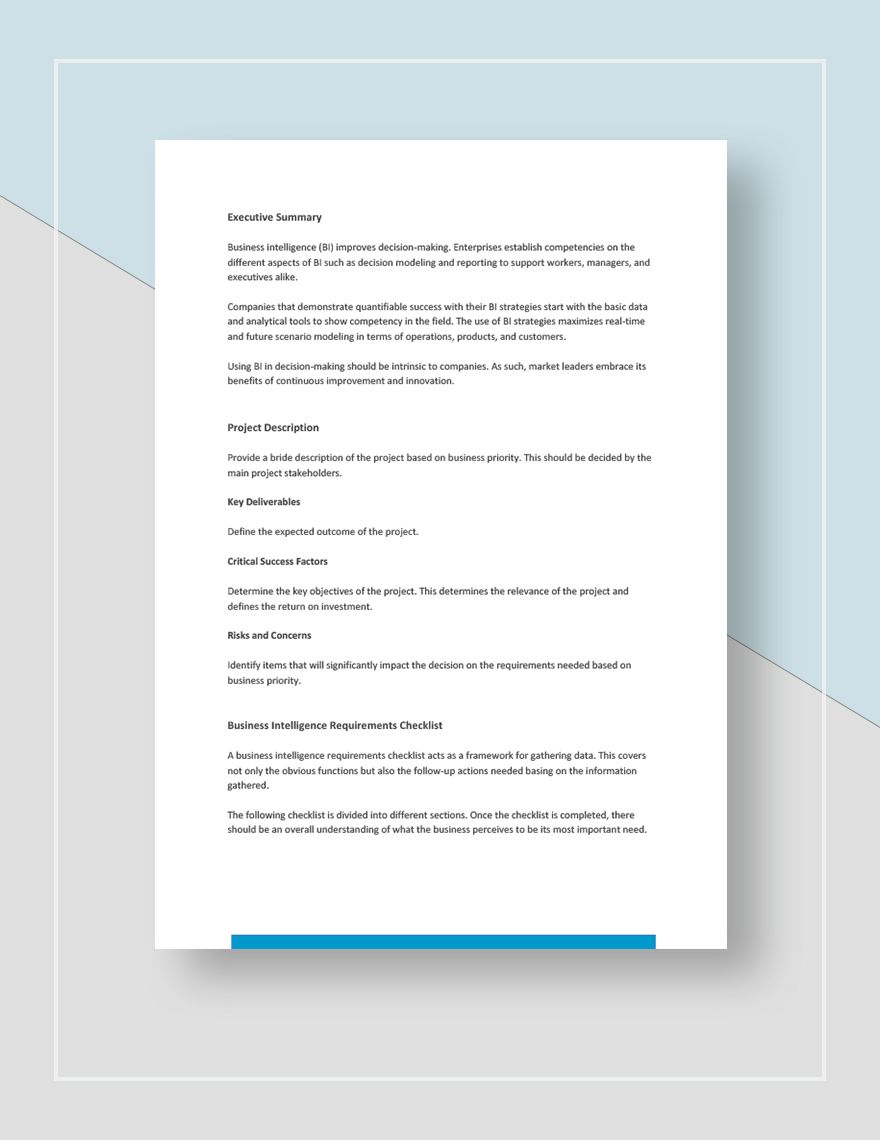Creating effective BI reports is crucial for data-driven decision-making. While the content and structure of reports vary depending on specific use cases, there are some fundamental requirements that should be considered when designing BI report templates. Having a well-defined template ensures consistency, accuracy, and ease of use for both report creators and consumers.
A comprehensive BI report requirements template should include various elements, including report purpose, target audience, data sources, analysis requirements, visualization types, and formatting guidelines. By establishing clear requirements, organizations can streamline the reporting process, improve data quality, and enhance the overall effectiveness of their BI reporting initiatives.

Key Elements of a BI Report Requirements Template
A well-structured BI report requirements template should clearly define the following elements:
Report Purpose: Outlining the specific objectives and intended use of the report helps align report content with business needs.
Target Audience: Identifying the intended recipients of the report ensures that the data and analysis are tailored to their level of technical expertise and decision-making responsibilities.
Data Sources: Specifying the data sources and their availability ensures that the report is based on accurate and reliable data.
Analysis Requirements: Defining the specific analysis required, such as trend analysis, comparative analysis, or forecasting, provides clarity on the data manipulation and transformations needed.
Visualization Types: Determining the appropriate visualization types for presenting the data effectively, considering factors such as data complexity and the intended audience.
Additional Considerations for BI Report Requirements
In addition to the core elements, there are other considerations to enhance the quality and usability of BI reports:
Formatting Guidelines: Establishing consistent formatting standards, including font, colors, and layout, ensures readability and facilitates comparisons between reports.
Interactivity: Including interactive elements, such as drill-down capabilities or filtering options, allows users to explore the data further and gain deeper insights.
Accessibility: Designing reports that are accessible to individuals with disabilities ensures that all stakeholders can access and utilize the information.
Regular Review and Updates: Establishing a process for reviewing and updating report requirements periodically ensures that the template remains aligned with evolving business needs and data availability.
Collaboration and Feedback: Involving stakeholders in the design and review process encourages collaboration and ensures that the report meets their requirements and expectations.
Conclusion
A well-defined BI report requirements template provides a solid foundation for creating impactful and informative reports. By considering the key elements outlined above and incorporating additional best practices, organizations can streamline their reporting process, optimize data utilization, and make more informed decisions based on data-driven insights.
Continuously reviewing and refining the BI report requirements template ensures that it remains relevant and adaptable to changing business requirements and data landscapes. By providing clear guidelines and establishing a collaborative approach, organizations can harness the power of BI reporting to gain a competitive advantage and drive business success.
